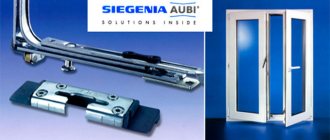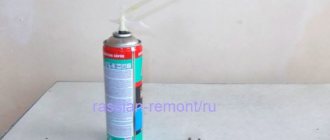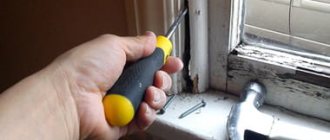One of the important conditions for insulation materials is their fire safety. Moreover, in this context, the ability to maintain the spread of flame, the ignition temperature and the toxicity of substances formed during the combustion of insulation are considered.
According to research, polyurethane foam is classified as moderately flammable (flammability class of polyurethane foam G2) and moderately flammable (B2) substances.
Flammability of insulation materials
Fire safety is an important factor in construction, depending on the flammability of the materials from which building floors and load-bearing structures are made.
Building materials are classified according to flammability and fire hazard class. A distinction is made between non-flammable (NG) and combustible (G) building materials. Non-combustible materials include: glass wool, mineral wool, vermiculite, perlite, expanded clay. The remaining insulation materials belong to the group of combustible materials. Polyurethane foam belongs to flammable materials, which are divided into 4 flammability groups:
- low flammable – G1
- moderately flammable - G2
- normal flammable – G3
- highly flammable - G4.
The flammability group of materials is determined according to GOST 30244-94 “Building materials. Combustibility test methods."
Polyurethane foam is a more flammable material than mineral fiber insulation. This problem is solved by introducing fire retardants into the formulation to prevent the spread of fire. This method leads to a deterioration in physical properties and an increase in the cost of polyurethane foam by up to 60%.
Toxicity
When polyurethane foam burns in laboratory conditions, substances such as:
- carbon dioxide;
- carbon monoxide (trace);
- water;
- nitrogen oxides;
- hydrocyanic acid (trace amount).
A reasonable question would be: how can PU foam be considered non-toxic if toxic hydrocyanic acid is produced when it burns? The answer lies on the surface. When tested in the laboratory, the combustion of the material is examined in chambers that exclude air access. Strictly speaking, it is not so much combustion that is being studied as the possibility of the formation of flammable compounds when the material is heated to certain temperatures. In real conditions, this formation of hydrocyanic acid is eliminated due to the interaction of nitrogen and oxygen from the air.
But what about carbon monoxide? Indeed, even in the presence of air, the combustion of polyurethane foam is accompanied by the release of carbon monoxide (CO), that is, the same carbon monoxide that causes poisoning of the body. Yes, this is a proven fact. However, the concentration of carbon monoxide is so low that it cannot be compared with the amount formed during the combustion of leather, wood, wool and synthetic materials (vinyl, nylon, etc.).
Experiments conducted with laboratory animals (rats) have proven that when inhaling combustion products of wool, wood and synthetics, the toxic effect is several times higher than the impact of volatile compounds during the combustion of polyurethane foam. And the point here is not only and not so much in the chemical composition, but also in the fact that 80-90% of polyurethane foam consists of carbon dioxide.
It turns out that the use of polyurethane foam for insulating houses not only protects against heat loss, but also increases the fire safety of the building.
Fire retardant paint for polyurethane foam
Water-based paint is environmentally friendly, odorless and does not contain components harmful to human health, and is classified as a fire and explosion-proof material. Protects against both primary fire and ignition during a fire. It polymerizes quickly and has high adhesion to polyurethane foam, ball and extruded polystyrene.
The effectiveness of using this paint using the example of polyurethane foam with flammability class G3 using Khimtrust FireShield paint (polyurethane foam) with a dry layer thickness of 1.5-2 mm:
| PPU with paint | PPU without paint | Regulatory document | |
| Flammability group | G1 (low flammable) | G3 (normally flammable) | GOST 30244-94 clause 7, method 2 |
| Flammability group | B2 (moderately flammable) | B3 (highly flammable) | GOST 30402-96 |
| Smoke generating ability group | D2 (moderate smoke generating ability) | D3 (high smoke-generating ability) | GOST 12.1.044-89 clause 4.18 |
| Combustion product toxicity group | T1 (low-hazard) | T2 (moderately dangerous) | GOST 12.1.044-89 clause 4.20 |
| Flame propagation group | RP1 (non-distributing) | RP2 (weakly spreading) | GOST 51032-97 |
| Fire hazard class | KM 2 | KM 5 | Technical regulations on fire safety requirements FZ-123 |
Flammability
The polyurethane foam itself cannot burn. Substances formed when polyurethane foam is heated have the ability to ignite. According to research, the temperature range at which polyurethane foam decomposes with the formation of flammable compounds lies in the range from +370 to +420 °C.
Since polyurethane foam cannot ignite before reaching these temperatures, it melts in the early stages of a fire. It is this molten mass that reduces the likelihood of flame spreading. It spreads, stopping the access of oxygen to the flame, and thus extinguishing it.
By the way, the carbon dioxide that appears when heating polyurethane foam is itself a good fire retardant, preventing contact of polyurethane foam with oxygen. Carbon dioxide (CO2) replaces the air and stops the spread of flames. The action of some foam and gas fire extinguishers is based on this principle.
CLAIM
1. A method for producing rigid polyisocyanurate foam, comprising reacting, at an isocyanate index of about 175 to about 400, the polyisocyanate with at least one natural oil polyol containing at least about 35 wt.%, based on the weight of the natural oil polyol, having a hydroxyl number of about 175 to about 375 and hydroxyl functionality from about 2.0 to about 2.8; in the presence of a foaming agent; and optionally in the presence of one or more surfactants, flame retardants, pigments, catalysts and fillers, wherein the resulting foam has a renewable bio-based material content of at least 8% by weight.
2. The method according to claim 1, in which the polyisocyanate is selected from the group consisting of m-phenylene diisocyanate, p-phenylene diisocyanate, 2,4-toluene diisocyanate, 2,6-toluene diisocyanate, 1,6-hexamethylene diisocyanate, 1,4-hexamethylene diisocyanate, 1, 3-cyclohexane diisocyanate, 1,4-cyclohexane diisocyanate, hexahydrotoluene diisocyanate and their isomers, isophorone diisocyanate, dicyclohexylmethane diisocyanates, 1,5-naphthylene diisocyanate, 4,4′-diphenylmethane diisocyanate, 2,4′-diphenylmethane diisocyanate, 4,4′-biphene ylene diisocyanate, 3.3′ -dimethoxy-4,4′-biphenylene diisocyanate, 3,3′-dimethyldiphenylpropane-4,4′-diisocyanate, 2,4,6-toluene triisocyanate, 4,4′-dimethyldiphenylmethane-2,2′,5,5′-tetraisocyanate and polymeric diphenylmethane diisocyanate (PDIC).
3. The method according to claim 1, wherein the polyisocyanate is a polymeric diphenylmethane diisocyanate (PDIC).
4. The method of claim 1, wherein the at least one natural oil polyol is present in an amount of at least about 40 weight percent, based on the weight of the natural oil polyol.
5. The method of claim 1, wherein the at least one natural oil polyol is present in an amount of at least about 45 weight percent, based on the weight of the natural oil polyol.
6. The method of claim 1, wherein the at least one natural oil polyol has a viscosity at 25°C of less than about 2000 cP.
7. The method of claim 1, wherein the at least one natural oil polyol has a viscosity at 25°C of less than about 1000 cP.
8. The method of claim 1, wherein the at least one natural oil polyol has a viscosity at 25°C of less than about 500 cP.
9. The method of claim 1, wherein the at least one natural oil polyol has a viscosity at 25°C of less than about 200 cP.
10. The method of claim 1, wherein the at least one natural oil polyol has a hydroxyl number of about 200 to about 350 and a functionality of about 2.0 to about 2.5.
11. The method of claim 1, wherein the natural oil is selected from the group consisting of canola oil, castor oil, coconut oil, corn oil, cottonseed oil, jatropha oil, flaxseed oil, olive oil, palm oil, palm kernel oil, peanut oil , poppy oil, soybean oil, sunflower oil, tall oil, tung oil, tallow and mixtures thereof.
12. The method according to claim 1, wherein the blowing agent is selected from the group consisting of cyclopentane, n-pentane and isopentane and mixtures thereof.
13. The method of claim 1, wherein the isocyanate index is from about 250 to about 350.
14. The method of claim 1, wherein the isocyanate index is from about 270 to about 310.
Sputtering process
If you have entered into an agreement with a company, a minibus arrives at the appointed time. It contains spraying equipment. To operate a high-pressure apparatus, a voltage of 380 V is required. If you only have 220 V, you usually start a generator that produces the required voltage. A low-pressure apparatus can operate from a 220 V network, but, as discussed below, the quality of thermal insulation will be significantly worse.
Typically, only hoses are pulled into or around the house to supply the foam components to the gun. It's comfortable. Workers who spray thermal insulation are dressed in protective suits, wearing a respirator, gloves and goggles. A respirator is necessary, since before hardening the components of the foam are toxic, and everything else is to protect the skin from ingress of polyurethane foam, which then cannot be removed.
The foam is applied from bottom to top, in small portions. Fill everything in without skipping, trying to prevent the formation of shells. As the foam expands, make sure that the layer thickness is no less than the required one. After the foam hardens, the excess can be cut off, but the deficiency cannot be made up for.
Mattresses with independent spring block
More modern and convenient, but with an order of magnitude higher price, is a block consisting of independent springs. Orthopedic mattresses, which are equipped with many luxury sofas and large beds, have independent springs.
What does it mean?
The inner part of such a mattress consists of many springs placed in separate covers - original “pockets”, which are made of high-quality durable material. Each pocket is subsequently glued to the others.
This scheme is designed to:
- Prevent abrasion of the sofa upholstery.
- Promote high anatomy, that is, adapt to the smallest curves of the body, relaxing the back and correctly positioning the vertebrae. Thanks to this, blood flow is restored, the process of muscle relaxation is more active and, accordingly, your rest becomes more productive.
- In addition to relaxing, such orthopedic mattresses have a preventive function, preventing the occurrence of many back diseases and accompanying headaches and joint pain. Using them, you can easily avoid depression and bad mood due to sleep disorders, improve memory and overall tone.
- Silence, flexibility and strength are also distinctive features of products with this type of spring connection.
The location of the springs inside the block also matters, it can be:
- Sequential, that is, in a row one after another.
- In chess order: every other.
- In a large spring there is a small one.
Mattresses with staggered springs are stiffer. Manufacturers, taking into account the degree of rigidity, distribute spring locations according to the needs of the body: for example, the hardest places correspond to the pelvic area. And a “smart” orthopedic mattress adapts to every part of your body, creating unique comfort.
Unlike a dependent unit, an independent structure contains more than a thousand individual springs per square meter. Their number depends on the size and diameter: the smaller it is, the higher the level of anatomy. This is of great importance for choosing a sleeping place, since when there is pressure on one side of the sofa or bed, on the other it is almost imperceptible. Therefore, nothing will disturb your vacation or create the so-called “ripple effect.”
In a word, each spring is capable of compressing individually, without clinging to the others. This ability gives any product maximum comfort, and your sleep - peace and duration. After resting on a mattress that has an independent spring unit, you will be quite capable of spending an active day and making a lot of right decisions! Share with friends :











